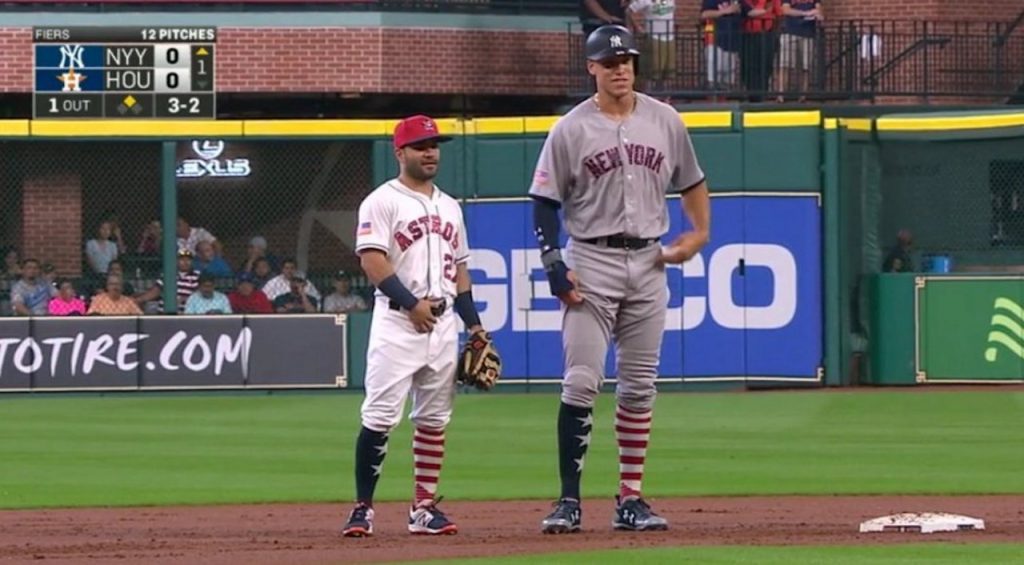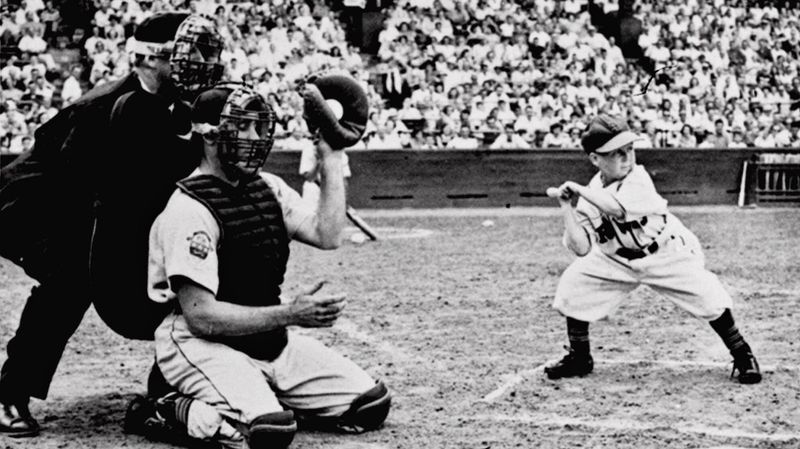How Baseball Closed Its Tiny Loophole

Baseball games are, fundamentally, a battle between a pitcher and a batter. The pitcher has to throw the ball and in doing so, is giving the batter a chance to hit the ball, perhaps for a home run; on the other hand, if the batter fails to hit the ball, the pitcher wins. But to make it fair, the rules require that the pitcher throw hittable pitches. If the pitch passes over home plate at a height no higher than (roughly) the letters on the batter’s uniform, but no lower than the bottom of his knees, that’s considered a hittable pitch. If the batter doesn’t swing at such a pitch (or if he swings and misses at any pitch), he’s credited with a “strike.” Three strikes, he’s out, and the next batter comes up to bat.
But if the pitcher doesn’t throw hittable pitches, the opposite happens. The invisible, three-dimensional space over home plate between the batter’s letters and knees is called the “strike zone,” (here’s an image) and any pitch which fails to touch that area (provided the batter doesn’t swing) is called a “ball.” If a batter earns four “balls” before he either hits the ball into play or before he gets three strikes, the batter gets to go to first base for free. If you’re a batter, that’s a good outcome.
But there’s a potential problem with the rule: the strike zone changes based on the height and batting stance of the batter. If a tall player stands straight, the distance between the letters and knees is a pretty big target for the pitcher. If a shorter player comes up to bat, the strike zone is smaller; if he crouches a bit more than usual, that space can shrink even more. In general, height isn’t the be-all-end-all in baseball (both players pictured above are All-Stars), but if you really need a baserunner, you may be tempted to put in a batter who is very, very short.
You should stem those temptations, though. It’s been tried, it worked, and it can’t be done again.

The picture above, despite the relatively youthful appearance of the batter, comes from a Major League Baseball game. The batter, named Eddie Gaedel, was not a kid, but you wouldn’t know it by looking at him. Weighing only about 65 pounds and standing about 3’7″, Gaedel was much smaller than the Jose Altuve, the 5’6″ All-Star pictured at the top. (For completion’s sake, the other guy in the top pic is Aaron Judge, who comes in at 6’7″.) And on Sunday, August 19, 1951, just weeks after his 26th birthday, Gaedel became the game’s shortest-ever Major Leaguer. The Detroit Tigers were in St. Louis, facing the hometown Browns in a doubleheader (that’s two games in one day, for those who aren’t baseball fans), and in the second game, the Browns pulled a stunt. In the first inning, they substituted Gaedel into the game, bringing him to the plate as their first batter of the game.
Immediately, the umpires screamed for game action to halt, knowing full well that Gaedel’s tiny strike zone guaranteed him a free trip to first base. The Society for American Baseball Research explains:
The umpires quickly tried to stop the at-bat, but [Browns owner Bill] Veeck made sure Taylor was prepared. The manager presented the official copy of Gaedel’s valid contract as submitted to the American League office. After 15 minutes of deliberation, and probably a phone call to league headquarters in Chicago, home plate umpire Ed Hurley returned and summoned Gaedel to the batter’s box.
Ultimately, Gaedel was allowed to come to the plate. Wearing uniform number 1/8th — yes, a fraction — he provided a minuscule strike zone which was nearly impossible for opposing pitcher Bob Cain to hit. Four pitches later, all balls, Gaedel was awarded first base. Gaedel was then removed for a pinch-runner, ending his day — and as it turned out, his career.
The next day, the league office voided Gaedel’s contract. As SB Nation reports, “[American League] President Will Harridge was not amused and unsuccessfully tried to purge Gaedel’s at-bat from the record books. Harridge then voided Eddie’s contract. From then on, all baseball contracts had to be approved by the commissioner before they could be signed.” Gaedel’s one time to the plate, despite Harridge’s efforts, remain in the record books today. And he’ll almost certainly remain the shortest-ever Major League forever. Because of the contract oversight rule put into place because of this stunt, no one shorter than Gaedel is likely to make it to the Majors.
Bonus fact: While being too short is, apparently, grounds for expulsion from Major League Baseball, dropping your pants isn’t. On July 16, 1990, Chicago White Sox first baseman Steve Lyons bunted and, sensing a close play at first, slid to avoid a tag. Lyons made it to the base safely, but his pants didn’t. The slide caused dirt to get between his pants and his underpants, and that’s uncomfortable, right? Lyons, as seen in this video, absentmindedly (one hopes!), dropped his pants to brush the dirt off his underwear. He quickly noticed his error and pulled his pants back up, and was not ejected from the game nor suspended for this PG-13 display.
From the Archives: Take Me Out to the Mayhem: Bill Veeck strikes again, with something called Disco Demolition Night.
